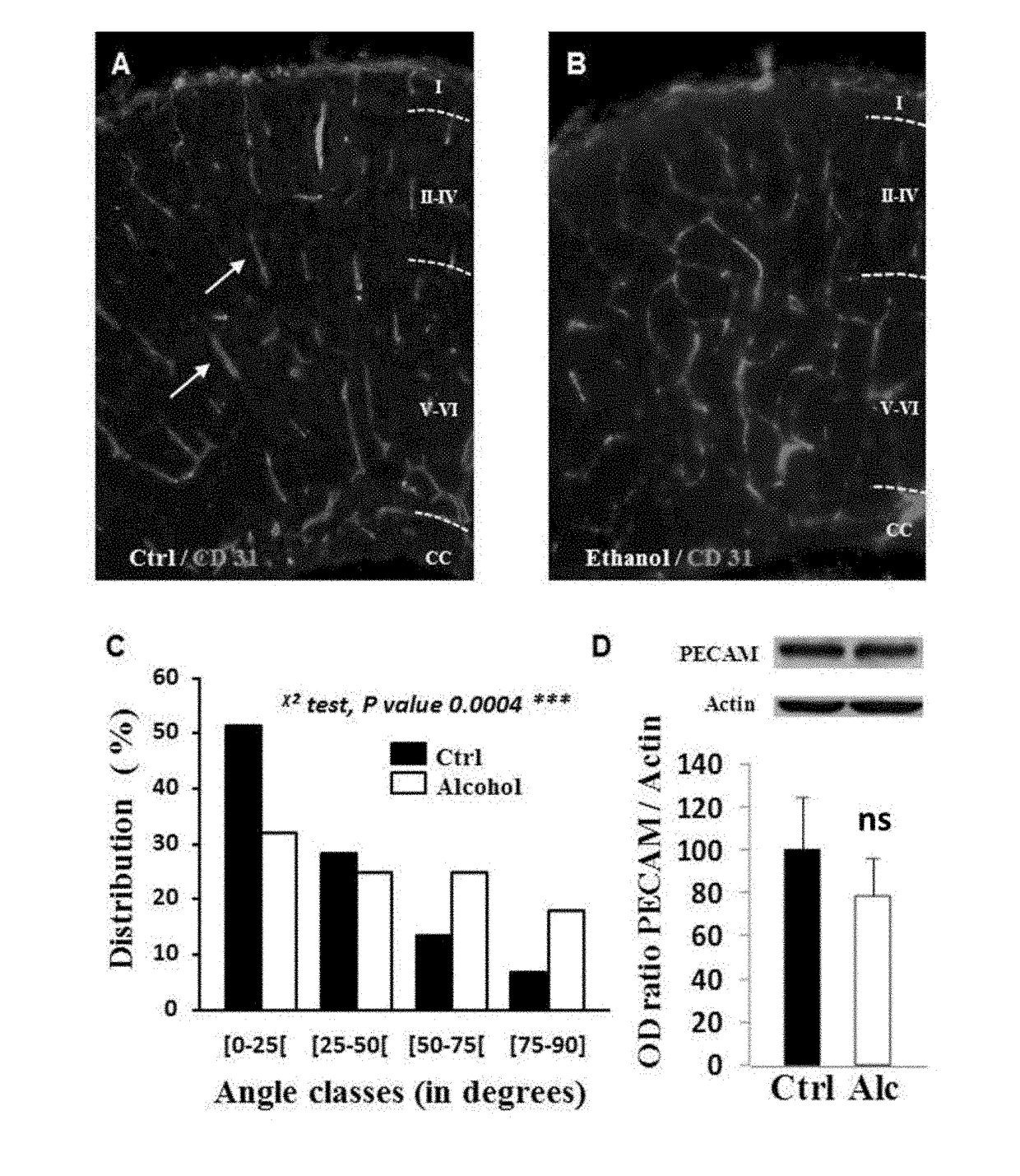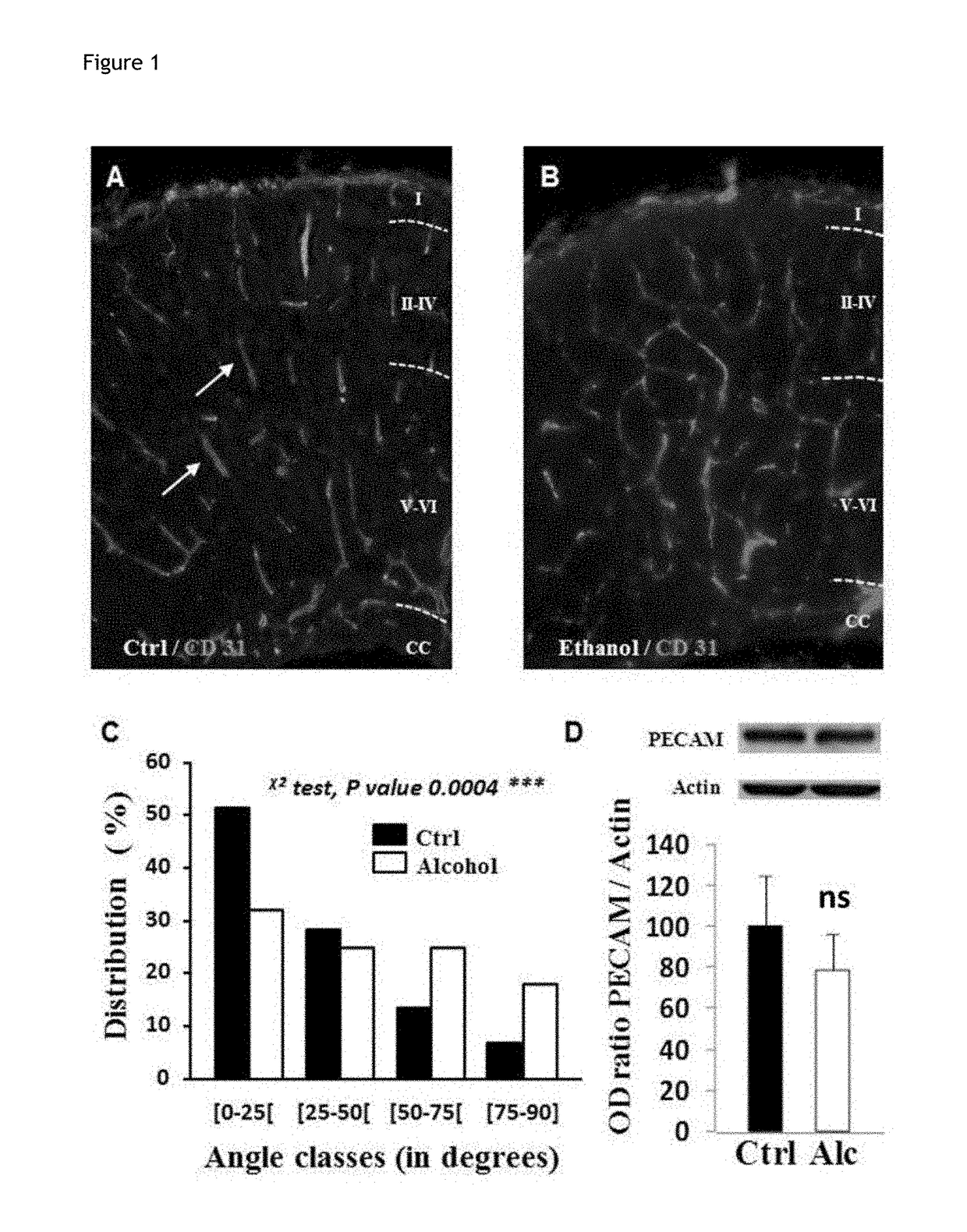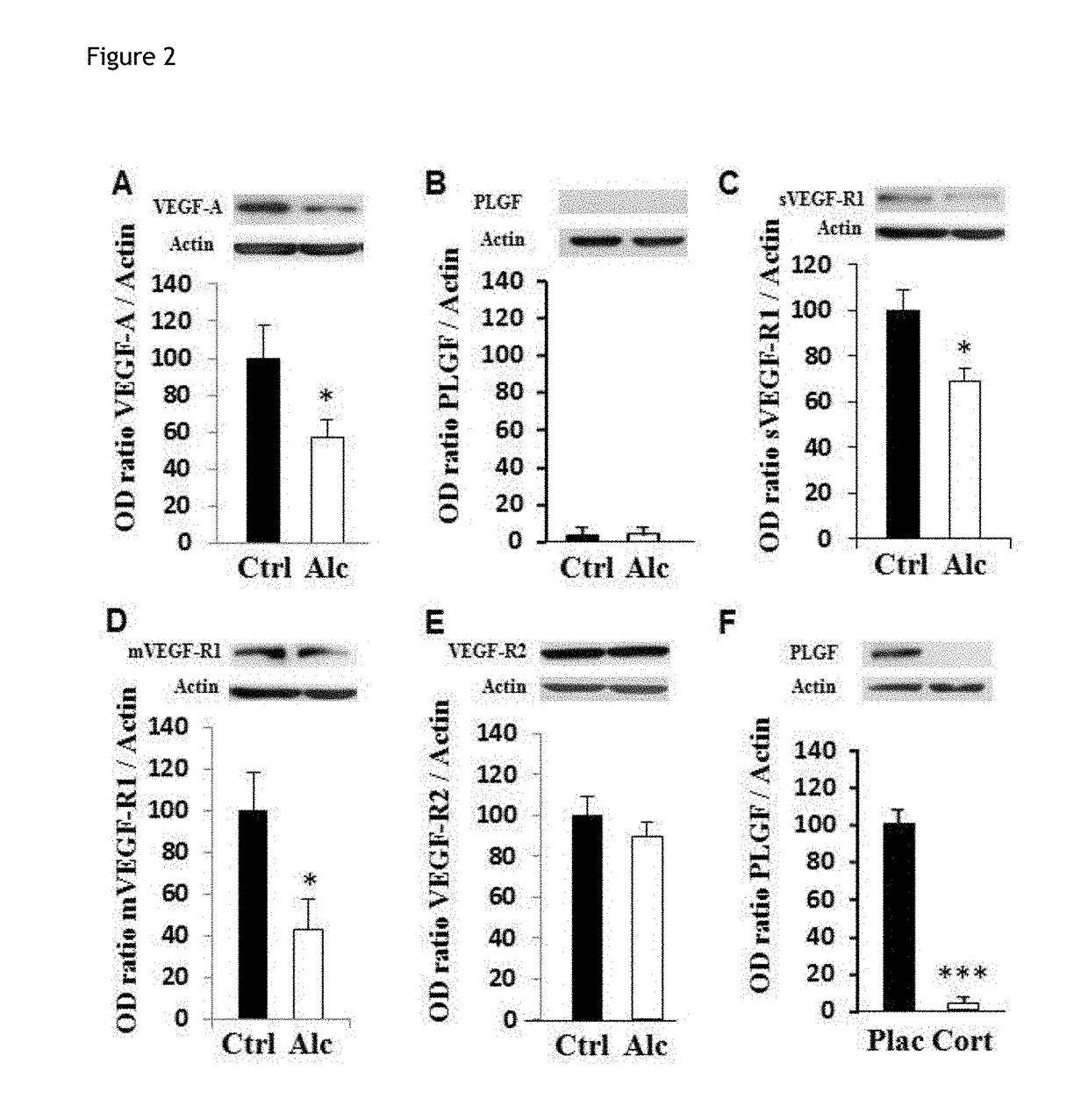Method for the diagnosis of disorders caused by fetal alcohol syndrome
a technology of fetal alcohol syndrome and diagnosis method, which is applied in the direction of biochemistry apparatus and processes, instruments, material analysis, etc., can solve the problems of mental retardation, alterations in brain development, and reduce the chance of early diagnosis
- Summary
- Abstract
- Description
- Claims
- Application Information
AI Technical Summary
Benefits of technology
Problems solved by technology
Method used
Image
Examples
Embodiment Construction
[0058]Brain Angiogenesis Abnormalities Following In Utero Alcohol Exposure
[0059]Effects of In Utero Alcohol Exposure on Brain Vasculature Development
[0060]The present inventors previously showed that prenatal alcohol exposure induces brain vascular disorganisation. In particular, the effect of alcohol is associated with a significant decrease in the number of cortical vessels with a radial orientation and an increase in the number of microvessels with a random orientation (FIG. 1). In parallel with the study carried out in mice, analysis of brain microvasculature in humans showed that, as in mice, the cortical microvessels that have a radial orientation in the “Control” group are completely disorganised in the “FAS / pFAS” group (FIG. 12 and Jegou et al., 2012).
[0061]Effects of In Utero Alcohol Exposure on the Expression of Genes Representative of the Vasculature in Mice
[0062]Quantitative RT-PCR (mRNA) and Western blot (protein) studies revealed a marked dysregulation of the levels of...
PUM
| Property | Measurement | Unit |
|---|---|---|
| significance threshold | aaaaa | aaaaa |
| Northern blot | aaaaa | aaaaa |
| nucleic acid arrays | aaaaa | aaaaa |
Abstract
Description
Claims
Application Information
 Login to View More
Login to View More - R&D
- Intellectual Property
- Life Sciences
- Materials
- Tech Scout
- Unparalleled Data Quality
- Higher Quality Content
- 60% Fewer Hallucinations
Browse by: Latest US Patents, China's latest patents, Technical Efficacy Thesaurus, Application Domain, Technology Topic, Popular Technical Reports.
© 2025 PatSnap. All rights reserved.Legal|Privacy policy|Modern Slavery Act Transparency Statement|Sitemap|About US| Contact US: help@patsnap.com



